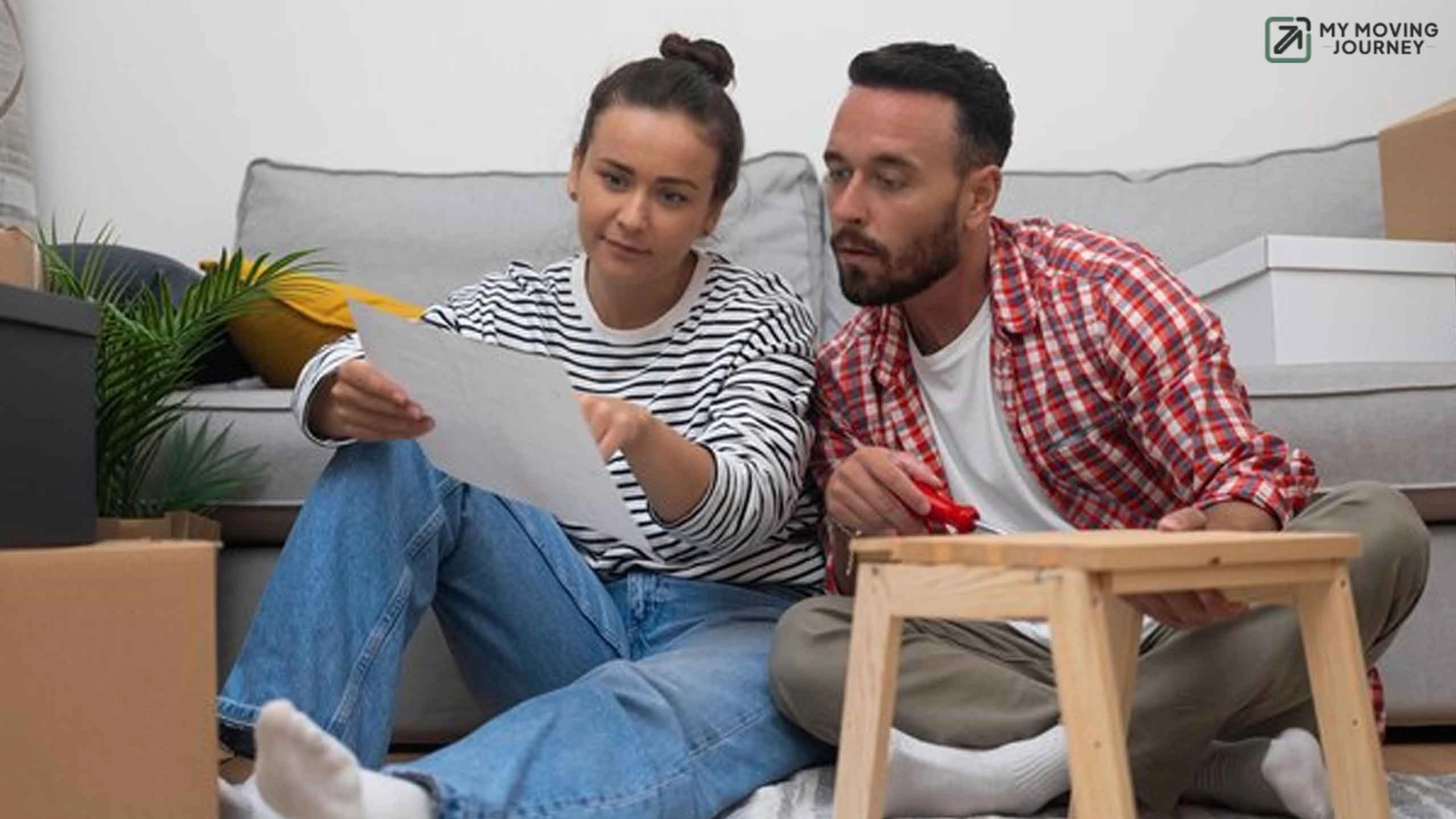Moving with plants can be a stressful experience. If you’re a plant lover, you’ll want to ensure your plants make it safely to their new home. Transporting plants requires careful planning, preparation, and execution to ensure they don’t experience shock or damage during transit.
Move with Plants for Better Mental Health
According to research over the past few decades, indoor plants have positively affected our mental and psychological health. Research has shown that being around plants can reduce symptoms of depression and anxiety, and even just the sight of plants can quickly improve our mood.
Spending time around plants can quickly improve our mood, with even a few minutes in their presence being enough to make us feel more at peace. Plants can also bring about feelings of escape and reduce stress while recharging our mental and physical resources. Considering all these factors, taking plants with us while moving can benefit our mental health.
Tips and Ideas for Moving with Plants
From packing to moving and repotting, there are several steps you can take to help your plants survive the move. My Moving Journey has shared some tips and ideas for moving with plants to help ensure a safe moving experience.
Contact U.S. Authorities when Moving Across Country
Movers should understand the regulations surrounding the transport of plants across state or international borders. The transportation of plants is heavily regulated due to the potential risks associated with the spread of pests and diseases that could harm the environment and agricultural industries. The United States has strict regulations regarding the entry of certain plants nationwide to prevent these risks.
All travelers entering the United States must declare all plant products on their U.S. Customs forms. Not all plant species can be transported across borders, and failure to comply with these regulations can result in significant fines and penalties. The consequences of breaking these regulations can be severe.
If you choose to bring plant products, please check the United States Department of Agriculture (USDA) guidelines to ensure that they meet the entry requirements. Remember, border officials have the authority to confiscate plants not permitted to enter their state or country.
Moving Plants with Professional Movers
When moving plants, consider their fragile nature and the risks involved. If you choose to hire professional movers, note that they typically do not cover plant damage during the move. Some moving companies may also even have restrictions against transporting plants on their trucks. You should always inquire about the company’s policy on plants before finalizing the move.
Moving plants can be challenging, but taking a few precautions can go a long way in ensuring their safety during transportation. Remember that professional movers may not cover damages to plants, and it’s always a good idea to clarify any restrictions or policies before the move.
Moving Plants with Yourself in Car
If you have decided to move your plants independently, taking certain precautions can help ensure their safety during transportation. Select sturdy boxes and line them with plastic to prevent soil spills. Carefully place your plants inside and use bubble wrap or foam cushioning to keep them from shifting or tipping over during the move. You should place taller plants on the car floor, allowing you to keep an eye on them.
In the event that you need to spend the night in a motel, monitor the temperature, as cold weather can damage fragile plants. Move them indoors with you to protect them from the cold if necessary. When transporting tall plants, it’s best to wrap them in plastic bags to avoid damage during the move. You should also poke some holes in the plastic to allow the plants to breathe.
Tips on How to Prepare Plants for Safe Moving
Preparing plants for a short move requires careful planning and attention to detail. Whether you are transporting indoor or outdoor plants, take measures to prevent pests from spreading and protect the plants from damage during transit.
Inspect and Treat for Pests
Before moving your outdoor plants, you should inspect each pot carefully for pests, such as mealybugs and spider mites, especially in the soil. If you notice any signs of infestation, use neem oil to treat the plants. To do this, spray both sides of each leaf in the morning and let the oil dry for at least 24 hours before safely moving the plant.
Assess the Pots
Assess your pots and planters to determine if they are prone to cracking. If so, repot the plants in shatterproof containers such as plastic nursery pots at least two to three weeks before the move. If you’re short on time, wrap each planter or put cardboard between pots to prevent them from knocking against each other. Wine dividers can also be useful for this purpose.
Cut Dry Leaves and Water
Cut back any dead or dying leaves using scissors or shears. Water the plants on the morning of the move or before placing them in boxes, ensuring the soil is not too wet. Excess moisture can cause root rot, and you do not want the plants sitting in standing water during transit.
Secure Delicate Plants
If you have delicate houseplants, place them in an area on their own. For instance, you may put a small planter in a car’s cup holder or find a box that fits snugly to prevent movement. However, keep in mind that some plants, such as Burro’s tail or other succulents, maybe too sensitive to movement and may lose leaves during transport. Shallow-rooted plants are also fragile and may not survive relocation.
Utilize Open Boxes
For all other houseplants, place them inside open boxes that are large enough to encase the plant’s pot. If a larger plant sticks out the top of the box, ensure it is securely anchored to prevent tipping. Use packing paper to line the space between the pot and the cardboard box, filling and cushioning as much space as possible.
Following these steps can help you transport your plants safely and securely during a short move. With careful preparation and attention to detail, you can ensure your plants arrive at their new home healthy and intact.
4 Best Way to Pack Plants for Moving
Proper packing is crucial to ensure their safe transport when moving your beloved plants to a new location. The process may vary depending on whether you transport them yourself or entrust the job to professional movers. However, with these simple steps, you can ensure the safe arrival of plants.
- Select a sturdy box that can accommodate your plants comfortably. Ensure that the bottom of the box is securely taped to prevent the plants from falling through.
- Cover the pots with plastic bags to prevent soil spillage and place them carefully in the box. You should use bags large enough to cover the entire pot and securely tie them to prevent movement.
- Fill empty spaces between the pots with suitable packing material to avoid any damage during transit. Using crumpled newspapers, extra plastic bags, or bubble wrap will prevent the plants from shifting inside the box, ensuring their safety.
- Once you have securely packed the plants, seal the box with sturdy tape and make small holes for airflow. Ensure that the box is clearly labeled with the name of the plant, its fragility, and instructions for proper handling during transport.
With these steps, your plants will be ready for transport to their new home. Remember to handle them carefully and give them the necessary attention to settle into their new environment.
4 Ideas to Move with Plants in Winter
Moving plants to a new home can be stressful, especially when it involves moving in the winter. However, with some progressive ideas, you can ensure that your plants remain healthy and safe during a winter move. You can utilize the following ideas to keep your plants safe in the winter:
- Water Your Plants Sparingly
You should water your plants only if they are exceptionally dry, and avoid watering them any closer than two days before the move. Over-watering can cause the soil to freeze, which can harm your plants.
- Pack Your Plants Safely
Wrap larger plants in covering like newspapers, paper bags, or an old bed sheet to prevent breakage. If necessary, repot your plants and pack unbreakable pots in boxes, filling any gaps with paper to ensure a proper fit. Remember to punch air holes into the box and label it properly. Always keep the boxes upright during transport.
- Ensure Comfortable Conditions for Your Plants
Plants are sensitive to extreme temperatures and maintain a comfortable environment during transport. If you’re moving the plants, avoid packing them in an unheated trunk, and don’t leave them in the vehicle overnight.
- Unload Your Plants First
After reaching your new home, prioritize unloading your plants to protect them from the cold weather.
4 Tips to Prevent Bugs Moving with Plants
Outdoor plants are always susceptible to pest, but the presence of natural predators keep the pest growth in check. On the other hand, indoor plants may be vulnerable to insect pests since they lack natural predators indoors. Here are some tips to prevent unsightly and damaging insect infestations on moving plants.
Inspect for Protection
Allow your plants to adjust to lower light levels indoors by placing them in a brightly lit, isolated indoor location for a week or two. Examine your plants daily, paying special attention to new growth, the undersides of leaves, and stems. The advice allows for identifying pests that may have hitched a ride.
If feasible, remove the plant from its container to inspect the soil. It is advised to soak the pot in lukewarm water for a few minutes to bring any pests to the surface.
Identify Common Plant Pests
The following are a few of the pests that infest moving plants:
- Aphids: These tiny insects stick to the plant and secrete sticky “honeydew” secretions.
- Mealybugs: These insects appear as white cotton bits and cling to succulents, coleus, gardenia, and poinsettias.
- Scale Insects: These sucking insects have a hard, waxy coating and appear as green bumps on leaves and stems, especially affecting ferns and ivy.
- Whiteflies: These small insects rise like clouds when the plant is disturbed, particularly hibiscus, ivy, and poinsettias.
- Spider Mites: These arachnids are so small that you may only observe their effects on plants, such as fine webbing on the underside of leaves.
Eliminate Bugs on Plant Leaves
Most houseplant pests feed on plants and can be found on the leaves, flower buds, and stems. Here are some natural methods for getting rid of bugs on the moving plants:
- Isolate the Plant: The first step is to isolate the plant to stop the infestation from spreading to other houseplants. You should also monitor the surrounding plants for several weeks for signs of indoor plant pests.
- Wash the Surrounding Area: Clean the area where the plant was placed thoroughly using soapy water to wash away hiding pests. If desired, sterilize the area with rubbing alcohol.
- Clean Plant Leaves: Use insecticidal or mild liquid soap to clean the infested plant. You should be cautious with the type of soap used, as some contain degreasers and detergents that can harm sensitive plants.
- Wash the Pot: Clean the pot and plant tray with soapy water. Houseplant pests can easily hide under the pot or even on the bottom.
- Remove the Bugs: Use a cotton swab to dab the bugs and remove them from the plant.
- Treat the Plant: Use neem oil for long-term pest control and prevention. Neem oil is a natural insecticide that works to kill and repel bugs. You can also use horticultural oil or try using hot pepper spray.
Using these tried and tested tips; you can help your plants survive the nasty pest and move safely to their new home.
Plan your Move with Plants
Moving with plants can have many benefits, including reducing stress, purifying the air, and adding a touch of nature to your new living space. You can smoothen your move by following tips, from selecting the right plants to packing and transporting them safely, with some planning and care.
Remember to include your plant companions in the journey if you’re planning a move soon. You can also check out My Moving Journey for helpful tips and advice.




